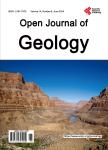Shallow-Water Origin of a Devonian Black Shale, Cleveland Shale Member (Ohio Shale), Northeastern Ohio, USA
Shallow-Water Origin of a Devonian Black Shale, Cleveland Shale Member (Ohio Shale), Northeastern Ohio, USA作者机构:Department of Geology Bowling Green State University Bowling Green OH USA EXPEC Advanced Research Center Saudi ARAMCO Dhahran Saudi Arabia
出 版 物:《Open Journal of Geology》 (地质学期刊(英文))
年 卷 期:2014年第4卷第12期
页 面:636-653页
学科分类:0709[理学-地质学] 081803[工学-地质工程] 07[理学] 08[工学] 0818[工学-地质资源与地质工程]
主 题:Black Shales Tempestites Hyperpycnites Devonian Appalachian Basin Catskill Delta
摘 要:Black shales are usually interpreted to require anoxic bottom waters and deeper water sedimentation. There has long been a debate about whether the Devonian Cleveland Shale Member of the Ohio Shale (CSM) was deposited in shallow- or deep-water depositional environments. This study looked at the CSM at 3 stratigraphic sections and 5 well cores in northeastern Ohio. The CSM mostly consists of sapropelite (interbedded carbonaceous black mudstones and gray calcareous claystones). The black and gray “shales are rhythmically bedded at micro- (1 cm thick), meso- (10 cm thick) and macro-scales (10s of cm thick) and represent changes in organic matter content (ranging from 7% - 20% TOC). Three types of event layers are interbedded with the mudrocks: 1) tempestites, 2) proximal turbidites, and 3) hyperpycnites. Individual tempestites and turbidites are laterally continuous?≥35 km, while hyperpycnites are too thin (1 cm) to trace laterally. Tempestites consist of hummocky stratified sandstones with groove casts and escape burrows overlain by planar laminated sandstones with wave ripples at the top. Tempestites average 13 cm thick, but can be amalgamated up to 45 cm thick, and are more common in the lower half of the unit. Turbidites are incomplete Bouma sequences that average 6 cm thick, show evidence of combined flow (“wave-modified turbidites), and are more common toward the top of the unit. Hyperpycnites (density underflows from river discharge) consist of inverse-to-normal graded sandy or silty microlaminae that have been studied primarily by using petrography and SEM. Condensed sections in the CSM are probable firmgrounds with carbonate concretions, and indicate intervals of low sedimentation rates. The evidence shows that the CSM depositional environment was receiving siliciclastics from the northeast (e.g., Catskill delta), and that the coarser-grained clastic sediment was primarily transported as density underflows (turbidites and hyperpycnites). However, signific



